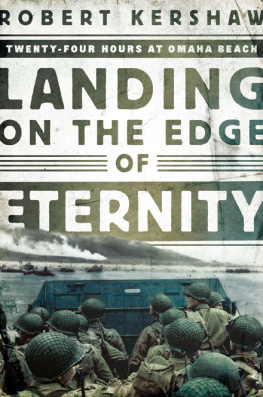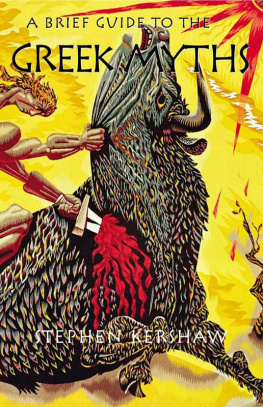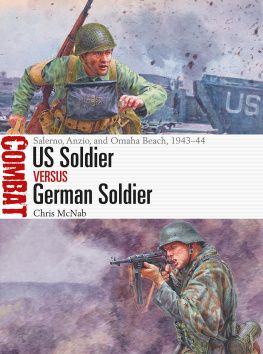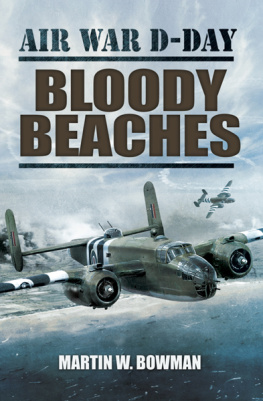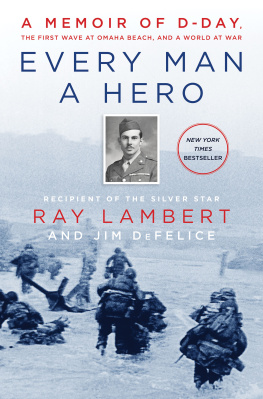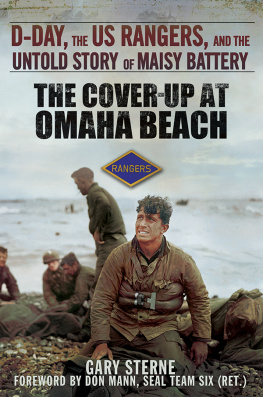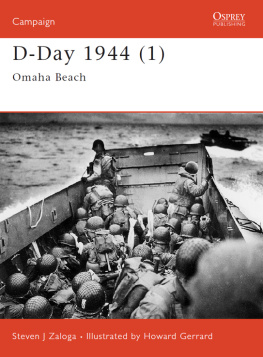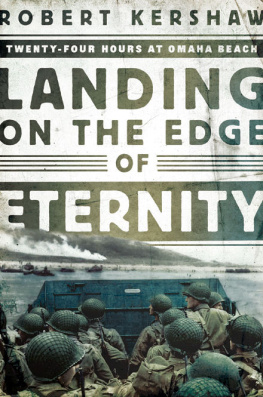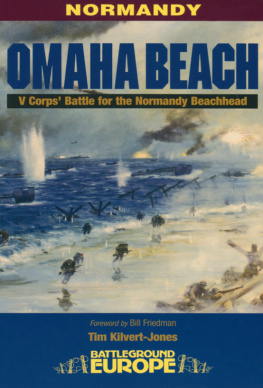Contents


| 2 IC | Second in command |
| Bocage | Hedgerow terrain |
| CO | Commanding Officer |
| DD | Duplex Drive (amphibious tank) |
| DUKW | Amphibious Vehicle. The duck was a thirty-one-foot, six-wheeled amphibious truck that could carry twenty-five fully equipped soldiers or 5,000 lbs of stowed cargo. Slow at sea, it could reach up to fifty mph on land. |
| Heer | German for Army. Heeresgruppe Army Group |
| Kampfgruppe | Battle Group |
| Kriegsmarine | German Navy |
| LCA | Landing Craft Assault. British built, designed to carry thirty-five men (thirty-two with equipment) and 1,700 lbs. It was just under forty feet long, thirteen tons, and capable of six knots. |
| LCI (L) | Landing Craft Large. These were 160 feet long and could land 188 men on lowered bow ramps, or transport 75 tons of cargo. |
| LCM | Landing Craft Mechanized. These were up to 56 feet long, the smallest landing craft able to land a tank, and capable of nine knots. It could carry sixty demolition engineers and their equipment. |
| LCR | Landing Craft Rocket |
| LCT | Landing Craft Tank. The largest version was 119 feet long and could carry three 50-ton tanks or 150 tons of cargo. |
| LCVP | Landing Craft Vehicle and Personnel. The so-called Higgins boats were about thirty-six feet long, could make nine knots, carried thirty-two to thirty-five men, and weighed eighteen tons. |
| LST | Landing Ship Tank. These were 328 feet long and could land 500 tons, generally becoming hospital ships after unloading to take the wounded back to England. |
| Luftwaffe | German air force |
| Nebelwerfer | German automatic rocket launcher |
| OB West | Oberkommando West [Supreme Command West] |
| OKW | Oberkommando der Wehrmacht. [German Armed Forces Supreme Command] |
| Panzerschreck | Bazooka |
| Panzerjger | Anti-tank |
| PAK | Panzerabwehrkanone[ anti-tank gun] |
| Ranks |
| Comparative German US Officers |
| Generalmajor Major General |
| Oberst Colonel |
| Oberstleutnant Lieutenant Colonel |
| Major Major |
| Hauptmann Captain |
| Oberleutnant Lieutenant |
| Leutnant 2nd Lieutenant |
| Comparative NCO ranks |
| Hauptfeldwebel Sergeant Major |
| Oberfeldwebel Master Sergeant |
| Feldwebel Sergeant |
| Unteroffizier Corporal |
| Obergefreiter Private first class |
| Grenadier Private |
| SP | Self-Propelled |
| WN | Widerstandsnest [strongpoint] |

I would like to thank Dr. Simon Trew from the British Royal Military Academy at Sandhurst for his generous help and support for this project, in his identification of much previously unsighted source material. I am truly grateful.







T he second major German counterattack came into Pointe du Hoc at 1:00 A.M. with whistles and shouting from the south and southwest. E Company did not detect the moving shadows until shapes had closed to within fifty yards and suddenly overran the vulnerable base angle of the L-shaped position. With activity masked by darkness and broken by disorienting flashing explosions nobody in the Ranger line understood the seriousness of the penetration when a quiet descended. There was no reserve available to react and too few leaders able to move about and check what had happened. The next German thrust two hours later collapsed the fragile line. Most of the mortar fire rained down off-target but this time German machine gun fire opened up in enfilade, lashing the inside of the Range-occupied hedgerow from both sides. Men running urgently by heading toward the Pointe were the first intimation that something was amiss. Sergeant Hathaway with the 5th Rangers yelled at passing shadows, Hey! Whats up? A rifle was thrust into his face by way of response and the password demanded. He was so rattled he could not even form the words. The Germans are right behind us, he was told, get out quick to the Pointe! The vulnerable extended Ranger position covering the Grandcamp road collapsed, and only about forty-eight men had got back to Rudders outpost on the Pointe by 4:00 A.M.
Salva Maimone was with a group E Company survivors left behind. My buddy was shot through the shoulder, and the bullet ran all the way through and left a hole as big as my fist. He pushed sulfa into the cavity. His sergeant waved a surrender flag when the Germans closed in with bayonets. Whos alls alive stand up, they demanded, otherwise were going to stick bayonets in them. Maimone tried to get his wounded friend to stand up and walk. About twenty Rangers were led away. E Company lost about twenty of its thirty men, while the others had two killed, one missing, and five captured. The night action dramatically reduced the Ranger perimeter to about two hundred yards deep around the Pointe, leaving about ninety to one hundred walking defenders, many of whom were walking wounded. Fifty-one seriously wounded men were waiting for evacuation. Rudder by now had lost some 43% of his strength.
At daybreak Rudder ordered Lieutenant Elmer Dutch Vermeer, the battalion demolitions officer, to settle the stubborn occupied German observation bunker at the head of the promontory once and for all. A twenty-pound sack of C-2 explosive was wedged against the rear door of the bunker and detonated. The explosion ripped it off and radio operator Benno Mller with the 369th Signals Company finally came out. They had been trapped inside the fetid, foul bunker with a dead body for over twenty-four hours and were out of ammunition. We opened the armored door at about midday and held out a white sheet.... We were just six left, he remembered, and came out with our hands up. To their relief, the Americans treated us well and were friendly. They were taken aboard one of the resupply landing craft and out to one of the big ships. The Rangers were not finally relieved until June 8, when a relief force from the 116th Regiment with Rangers reached the village of Saint-Pierre-du-Mont, spearheaded by tanks from the 743rd Tank Battalion.

